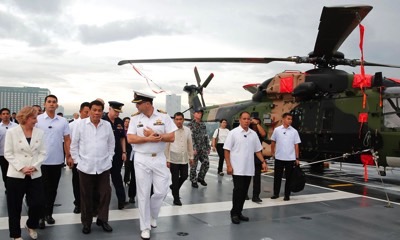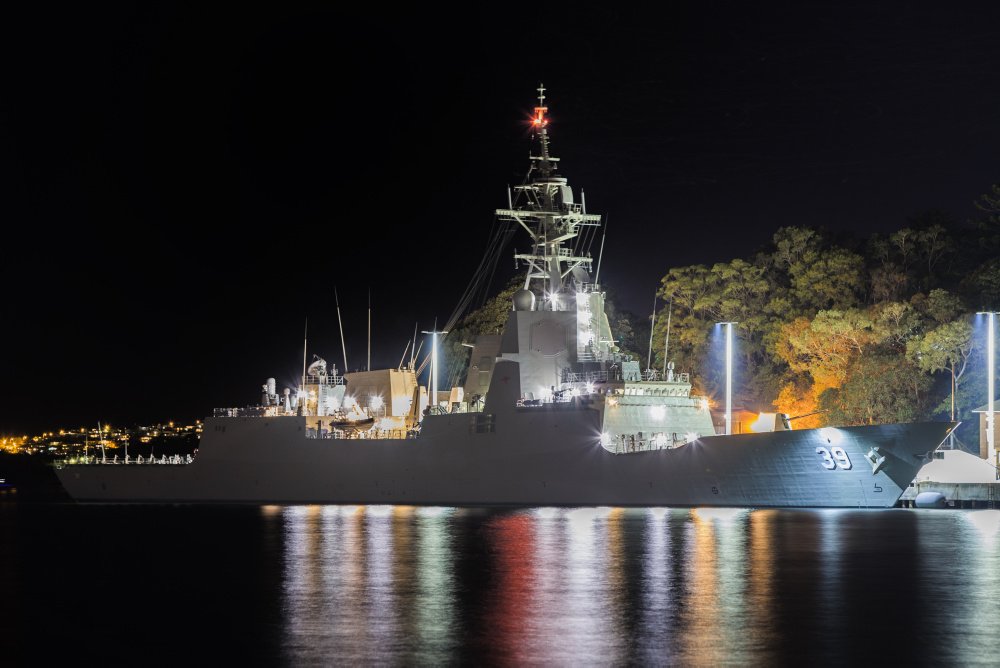Jura The idiot
General
dated October 15, 2017:
HMAS Adelaide hosts President Duterte in the Philippines

HMAS Adelaide hosts President Duterte in the Philippines
Philippines President Rodrigo Duterte, the Secretary for National Defense Delfin Lorenzana and a delegation of senior government and military officials visited HMAS Adelaide (Oct 2017) as Australia continues to work closely with the Government of the Philippines to counter the threat of terrorism in the region.
Australia has a long history working with neighbouring nations including the Philippines to maintain regional security and counter terrorism in the Indo-Pacific.
In June 2017, Royal Australian Air Force AP-3C Orion aircraft commenced surveillance flights over the southern Philippines to collect information that is assisting the Armed Forces of the Philippines in its fight against Daesh-affiliated terrorism in Marawi.
Chief of the Defence Force, Air Chief Marshal Mark Binskin was in Manila on 9 and 10 October and met with the Secretary of National Defense Delfin Lorenzana, where they discussed Australian support to the Philippines’ fight against Daesh-affiliated terrorism in the southern Philippines. He also met with his counterpart, General Eduardo Año to discuss practical opportunities for the Australian Defence Force (ADF) to further its support to the Armed Forces of the Philippines.
The Daesh-affiliated conflict in the southern Philippines highlights the crucial need for South East Asian nations to proactively work together to counter terrorism in the region.
HMA Ships Adelaide and Darwin are in Manila as part of Indo-Pacific Endeavour 2017, a joint task group deployment to the region focussed on international engagement.
In addition to the Philippines, Indo-Pacific Endeavour’s visit program includes Brunei, Cambodia, the Federated States of Micronesia, India, Indonesia, Japan, Malaysia, the Republic of Korea, Singapore, Thailand and Timor-Leste.


